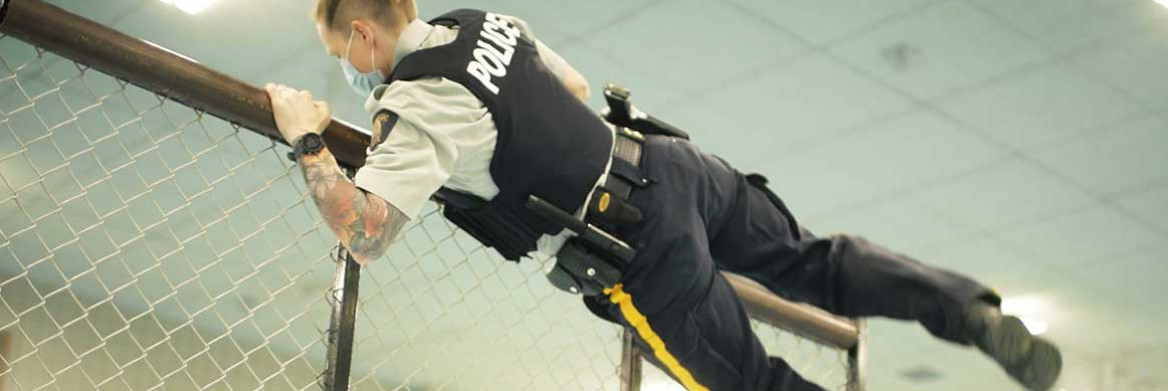A new fitness test will help ensure RCMP officers have the ability to perform the physical demands of police work. While the current Physical Abilities Requirement Evaluation — commonly known as the PARE — has served the RCMP for decades, the new police fitness test is designed to better reflect the realities of the job.
"I find that it's definitely more job appropriate,
" says RCMP Sgt. Beth Philipp, who completed a trial of the new test earlier this year. "With the stations that we went through, you can relate to the job and what the challenges are.
"
Occupational requirements
While the current PARE includes a circuit that must be done multiple times before completing a push-pull station and a heavy-bag carry, the new fitness test includes a series of four separate stations each evaluating different occupational requirements.
The stations run scenarios that evaluate an officer's ability to chase a suspect on foot, complete evacuation tasks during a natural disaster, react to an Immediate Action Rapid Deployment call where police respond to an active threat, and physically control someone who's not co-operating with an officer's instructions.
"We focused on the job regardless of who's doing it, whether you're 20 years old or 60, or whether you're 4 foot 11 or 6 foot 9,
" says Leslie Frei, who oversees the RCMP's fitness and health promotion program. "We sat down with a team of RCMP officers with a wide variety of policing experience and with representation from different groups to ensure they were representative of the entire RCMP workforce.
"
To accurately capture what it's like on the job, RCMP officers will complete the new test wearing a full-duty uniform. "That's exactly the uniform that we do our job in every day,
" says Philipp, who's worked with the RCMP for 19 years and currently oversees community policing at the Strathcona County detachment in Alberta. "It's a good mechanism for measuring how you'll do in the field versus the old PARE where you were in shorts, a T-shirt, and running shoes.
"
Research and development
To develop the new test, the RCMP worked with the Canadian Armed Forces Morale and Welfare Services, which employs researchers dedicated to developing tests and scenarios that reflect a job's physical demands.
Rachel Blacklock, who led research on the project, says meeting with RCMP officers and hosting focus groups was essential to capture the demands of police work. "We use multiple sources of information collected in different ways, but one of our biggest sources was input from RCMP officers,
" says Blacklock. "At every stage, they had the opportunity to provide context to data and they designed the scenarios that we mocked up.
"
Researchers studied tasks that are essential to policing that all front-line officers could be required to do. Then, they looked at the physical demands of the tasks and the minimal performance level to accomplish them safely and efficiently. Finally, they created testing scenarios to evaluate how officers meet the required performance levels.
"The test is representative of what you could find when you're working,
" says RCMP Cst. Jihan McDougall, an Indigenous Policing Services officer in British Columbia who completed a trial of the new fitness test. "In B.C., we do get wildfires every summer and one of the tests replicated what it's like loading up a truck when you're limited on time.
"
A portable test
The new test comes in two forms: The gold standard test, which will be completed by cadets at the RCMP's Depot training academy in Regina, and the field test that is done by RCMP officers working in detachments across the country.
The gold standard test features equipment and obstacles designed to look and feel most like the job, whereas the field test can be completed almost anywhere, with or without a gym, while still ensuring officers can meet the same requirements as the gold standard test. "It's the same movements and very similar demands, but in a simplified format,
" says Blacklock.
The field test will make it easier for officers in remote regions to prepare for and complete the test, removing potential barriers involved with the current PARE.
"You don't need all the equipment or a big space or a lot of stairs to train for the new test,
" says Cst. Gurpreet Arora, a child exploitation investigator in British Columbia who also trialed the new test.
While work to finalize the new test is still underway, the hope is to have it ready for RCMP cadets and officers to use in 2023.
